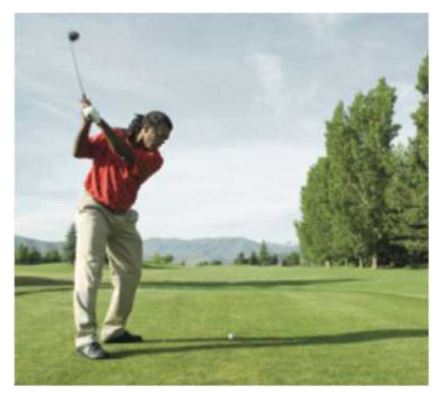
Concept explainers
Motion οf a Golf Ball A golf ball is hit with an initial velocity of 130 feet per second at an inclination of to the horizontal. In physics, it is established that the height of the golf ball is given by the function
where is the horizontal distance that the golf ball has traveled.

(a) Determine the height of the golf ball after it has traveled 100 feet.
(c) What is the height after it has traveled 500 feet?
(d) How far was the golf ball hit?
(e) Use a graphing utility to graph the function .
(f) Use a graphing utility to determine the distance that the ball has traveled when the height of the ball is 90 feet.
(g) Create a TABLE with and . To the nearest 25 feet, how far does the ball travel before it reaches a maximum height? What is the maximum height?
(h) Adjust the value of until you determine the distance, to within 1 foot, that the ball travels before it reaches its maximum height.
Want to see the full answer?
Check out a sample textbook solution
Chapter 2 Solutions
EBK PEARSON ETEXT PRECALCULUS -- ACCESS
Additional Math Textbook Solutions
Elementary Statistics (13th Edition)
Beginning and Intermediate Algebra
Calculus: Early Transcendentals (2nd Edition)
Precalculus: A Unit Circle Approach (3rd Edition)
Finite Mathematics for Business, Economics, Life Sciences and Social Sciences
Elementary Statistics ( 3rd International Edition ) Isbn:9781260092561
- A 20 foot ladder rests on level ground; its head (top) is against a vertical wall. The bottom of the ladder begins by being 12 feet from the wall but begins moving away at the rate of 0.1 feet per second. At what rate is the top of the ladder slipping down the wall? You may use a calculator.arrow_forwardExplain the focus and reasons for establishment of 12.4.1(root test) and 12.4.2(ratio test)arrow_forwarduse Integration by Parts to derive 12.6.1arrow_forward
- Explain the relationship between 12.3.6, (case A of 12.3.6) and 12.3.7arrow_forwardExplain the key points and reasons for the establishment of 12.3.2(integral Test)arrow_forwardUse 12.4.2 to determine whether the infinite series on the right side of equation 12.6.5, 12.6.6 and 12.6.7 converges for every real number x.arrow_forward
- use Corollary 12.6.2 and 12.6.3 to derive 12.6.4,12.6.5, 12.6.6 and 12.6.7arrow_forwardExplain the focus and reasons for establishment of 12.5.1(lim(n->infinite) and sigma of k=0 to n)arrow_forwardExplain the focus and reasons for establishment of 12.5.3 about alternating series. and explain the reason why (sigma k=1 to infinite)(-1)k+1/k = 1/1 - 1/2 + 1/3 - 1/4 + .... converges.arrow_forward
- Algebra & Trigonometry with Analytic GeometryAlgebraISBN:9781133382119Author:SwokowskiPublisher:Cengage
